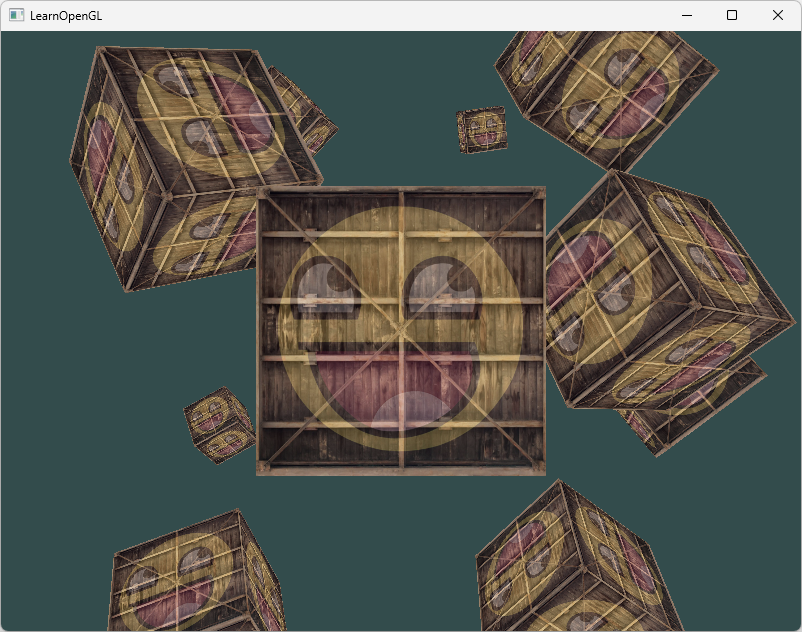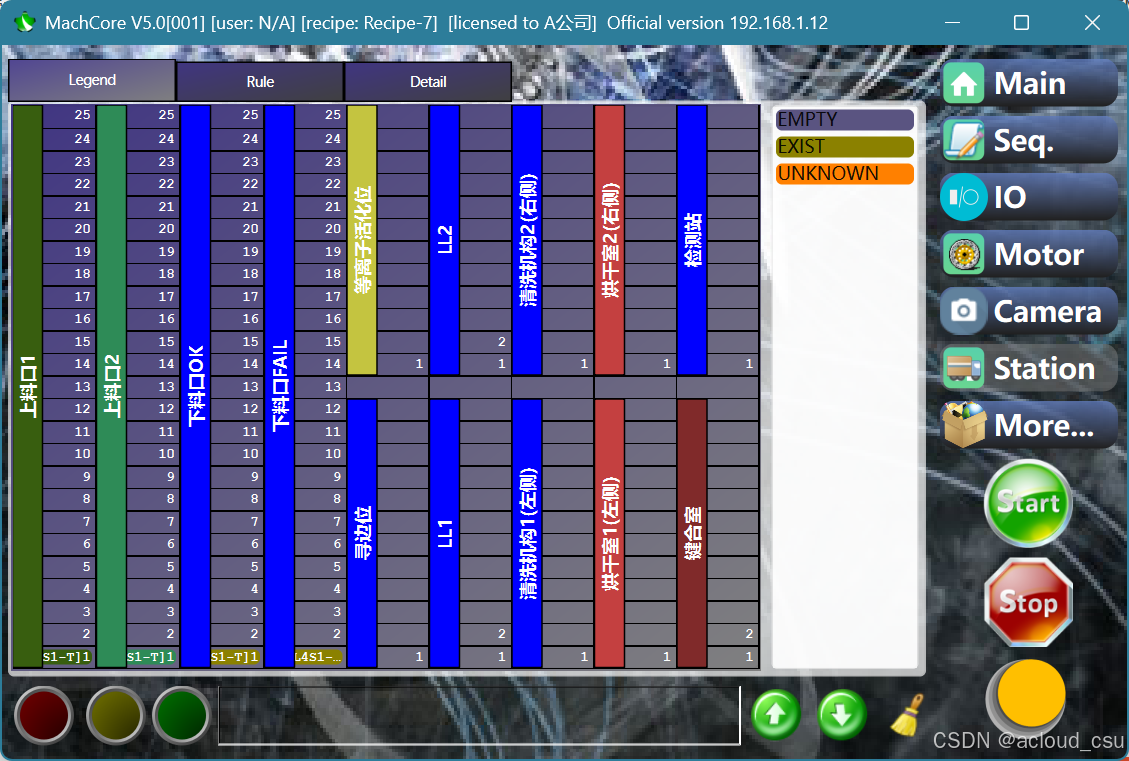深入解析 posix_spawn():高效的进程创建方式
1. 引言
在 Unix/Linux 系统中,传统的进程创建方式主要依赖 fork() 和 exec() 组合。但 fork() 在某些情况下可能存在性能瓶颈,特别是当父进程占用大量内存时,fork() 仍然需要复制整个地址空间(即使采用了写时复制 COW),这会带来额外的开销。
为了解决这个问题,POSIX 规范引入了 posix_spawn(),它提供了一种更高效、更轻量级的方式来创建新进程,而无需 fork() 产生的额外资源消耗。
本文将详细介绍:
posix_spawn()解决的问题- 如何使用
posix_spawn() posix_spawn()的底层实现- 实际应用场景
2. posix_spawn() 解决了什么问题?
2.1 fork() 的性能问题
在 fork() + exec() 组合中:
fork()复制当前进程的地址空间- 现代系统采用写时复制(Copy-On-Write, COW),避免立即复制所有内存,但仍然可能有页表拷贝和额外的开销。
exec()替换进程exec()调用会加载新程序,并清空原始进程的内存。
在小型进程中,fork() + exec() 的开销较小。但在大型进程(如 Web 服务器、大型数据库)中:
- 父进程可能占用数 GB 内存,导致
fork()开销变大。 - 进程切换和 COW 的页表维护 仍然带来额外的计算开销。
- 资源受限设备(如嵌入式系统) 无法承受
fork()产生的额外开销。
2.2 posix_spawn() 的改进
posix_spawn()不使用fork(),而是直接创建新进程。- 避免
fork()产生的 内存复制和 COW 额外负担。 - 适用于嵌入式系统、轻量级进程管理、高性能应用(如 Web 服务器、数据库等)。
3. posix_spawn() 的使用方法
3.1 posix_spawn() 的函数原型
#include <spawn.h>
int posix_spawn(pid_t *pid, const char *path,
const posix_spawn_file_actions_t *file_actions,
const posix_spawnattr_t *attrp,
char *const argv[], char *const envp[]);
pid:存储新进程的 PID。path:要执行的程序路径(如/bin/ls)。file_actions:文件描述符操作(如重定向stdin,stdout)。attrp:进程属性,如调度策略。argv[]:命令行参数数组(和execv()类似)。envp[]:环境变量数组。
3.2 posix_spawn() 的基本示例
#include <spawn.h>
#include <stdio.h>
#include <stdlib.h>
#include <unistd.h>
extern char **environ; // 环境变量
int main() {
pid_t pid;
char *args[] = {"ls", "-l", NULL};
if (posix_spawn(&pid, "/bin/ls", NULL, NULL, args, environ) != 0) {
perror("posix_spawn failed");
exit(EXIT_FAILURE);
}
printf("Spawned process PID=%d\n", pid);
return 0;
}
执行效果:
Spawned process PID=12345
total 32
-rwxr-xr-x 1 user user 1234 Jan 1 12:00 example.txt
...
posix_spawn()直接创建了一个新进程并执行/bin/ls,避免fork()产生的额外开销。
3.3 posix_spawn_file_actions_t(文件重定向)
posix_spawn() 支持文件重定向,类似于 dup2():
#include <spawn.h>
#include <stdio.h>
#include <stdlib.h>
#include <fcntl.h>
#include <unistd.h>
extern char **environ;
int main() {
pid_t pid;
char *args[] = {"ls", "-l", NULL};
posix_spawn_file_actions_t file_actions;
posix_spawn_file_actions_init(&file_actions);
posix_spawn_file_actions_addopen(&file_actions, STDOUT_FILENO, "output.txt", O_WRONLY | O_CREAT, 0644);
if (posix_spawn(&pid, "/bin/ls", &file_actions, NULL, args, environ) != 0) {
perror("posix_spawn failed");
exit(EXIT_FAILURE);
}
printf("Output redirected to output.txt, PID=%d\n", pid);
posix_spawn_file_actions_destroy(&file_actions);
return 0;
}
posix_spawn_file_actions_init():初始化文件操作。posix_spawn_file_actions_addopen():重定向stdout到output.txt。- 执行
/bin/ls,并将输出写入output.txt。
4. posix_spawn() 的底层实现
4.1 posix_spawn() vs. fork() + exec()
| 方式 | 特点 | 适用场景 |
|---|---|---|
fork() + exec() | 先复制进程,再执行新程序 | 通用,但在大型进程中开销大 |
posix_spawn() | 直接创建进程,避免 fork() 额外开销 | 适合轻量级进程、嵌入式系统、资源受限环境 |
4.2 posix_spawn() 依赖的系统调用
不同的操作系统实现 posix_spawn() 时,可能会:
- 在 Linux 上,底层使用
clone():clone()允许创建共享资源的进程(如 Linux 容器)。
- 在 macOS 上,使用
vfork():vfork()避免fork()复制内存,但可能引入同步问题。
参考:https://blog.famzah.net/2017/04/29/posix_spawn-on-linux/
5. posix_spawn() 的应用场景
✅ 嵌入式系统
- 由于
posix_spawn()避免fork()的内存复制,更适合 低内存设备(如路由器、IoT 设备)。
✅ 高性能 Web 服务器
- Nginx、Apache 等服务器需要快速启动新进程,
posix_spawn()可以减少fork()带来的额外资源开销。
✅ 守护进程(Daemon)
- 后台进程管理(如
cron) 使用posix_spawn()代替fork(),提升效率。
✅ Docker、容器环境
- 现代 Linux 容器使用
clone()或posix_spawn(),避免fork()产生不必要的进程开销。
6. 结论
🚀 posix_spawn() 提供了一种比 fork() 更高效的进程创建方式,特别适用于:
- 资源受限系统(嵌入式、IoT)
- 高性能服务器(Web、数据库)
- 后台守护进程
💡 虽然 fork() 仍然是通用方案,但在高性能或低资源环境中,posix_spawn() 是更好的选择!
Deep Dive into posix_spawn(): A Modern Approach to Process Creation
1. Introduction
In traditional Unix-like operating systems, the standard way to create a new process is through fork() and exec(). However, fork() has a major performance issue: it duplicates the entire address space of the parent process, even if the child process will immediately replace itself with exec().
To address this inefficiency, POSIX introduced posix_spawn(), which provides a more lightweight and efficient method for creating new processes, especially in low-resource environments such as embedded systems.
In this article, we will explore:
- The problems
posix_spawn()solves - How to use
posix_spawn() - The internal implementation of
posix_spawn() - Real-world use cases
2. What Problem Does posix_spawn() Solve?
2.1 The Performance Overhead of fork()
In a traditional fork() + exec() sequence:
fork()creates a child process by duplicating the parent process.- The child process then calls
exec(), replacing itself with a new program.
This works fine for small processes, but for large processes (e.g., web servers, databases):
- The parent process may have a large memory footprint (e.g., several GB).
- Even with Copy-on-Write (COW), page table duplication introduces overhead.
fork()can be inefficient in memory-constrained environments like embedded systems.
2.2 How posix_spawn() Improves Performance
- Instead of using
fork(),posix_spawn()directly creates a new process and executes a program. - This eliminates the overhead of memory duplication and reduces resource consumption.
- It is particularly useful in embedded systems, lightweight process management, and high-performance applications.
3. How to Use posix_spawn()
3.1 Function Prototype
#include <spawn.h>
int posix_spawn(pid_t *pid, const char *path,
const posix_spawn_file_actions_t *file_actions,
const posix_spawnattr_t *attrp,
char *const argv[], char *const envp[]);
pid: Stores the process ID of the spawned process.path: The program to be executed (e.g.,/bin/ls).file_actions: File descriptor manipulations (e.g., redirecting stdin, stdout).attrp: Process attributes such as scheduling policy.argv[]: Command-line arguments (same asexecv()).envp[]: Environment variables.
3.2 Basic Example of posix_spawn()
#include <spawn.h>
#include <stdio.h>
#include <stdlib.h>
#include <unistd.h>
extern char **environ;
int main() {
pid_t pid;
char *args[] = {"ls", "-l", NULL};
if (posix_spawn(&pid, "/bin/ls", NULL, NULL, args, environ) != 0) {
perror("posix_spawn failed");
exit(EXIT_FAILURE);
}
printf("Spawned process PID=%d\n", pid);
return 0;
}
Output:
Spawned process PID=12345
total 32
-rwxr-xr-x 1 user user 1234 Jan 1 12:00 example.txt
...
posix_spawn()directly spawns a new process withoutfork(), avoiding memory duplication.
3.3 Using posix_spawn_file_actions_t for File Redirection
Similar to dup2(), posix_spawn() allows file redirection:
#include <spawn.h>
#include <stdio.h>
#include <stdlib.h>
#include <fcntl.h>
#include <unistd.h>
extern char **environ;
int main() {
pid_t pid;
char *args[] = {"ls", "-l", NULL};
posix_spawn_file_actions_t file_actions;
posix_spawn_file_actions_init(&file_actions);
posix_spawn_file_actions_addopen(&file_actions, STDOUT_FILENO, "output.txt", O_WRONLY | O_CREAT, 0644);
if (posix_spawn(&pid, "/bin/ls", &file_actions, NULL, args, environ) != 0) {
perror("posix_spawn failed");
exit(EXIT_FAILURE);
}
printf("Output redirected to output.txt, PID=%d\n", pid);
posix_spawn_file_actions_destroy(&file_actions);
return 0;
}
- Redirects
stdouttooutput.txt. - Avoids manually using
dup2().
4. How posix_spawn() Works Internally
4.1 Comparison of posix_spawn() vs. fork() + exec()
| Method | Characteristics | Use Case |
|---|---|---|
fork() + exec() | Creates a copy of the parent process, then replaces it | Standard Unix process creation, but expensive for large processes |
posix_spawn() | Directly spawns a new process, skipping fork() | Lightweight, ideal for embedded systems and high-performance applications |
4.2 System Calls Used by posix_spawn()
The implementation varies by operating system:
- On Linux,
posix_spawn()is implemented usingclone():clone()allows processes to share memory, file descriptors, and other resources.
- On macOS,
posix_spawn()is implemented usingvfork():vfork()avoids copying memory but requires careful synchronization.
5. Practical Use Cases
✅ Embedded Systems
posix_spawn()avoids unnecessary memory duplication, making it ideal for low-memory devices (e.g., IoT, routers).
✅ High-Performance Web Servers
- Web servers like Nginx and Apache use process spawning extensively.
posix_spawn()can reduce the overhead of creating worker processes.
✅ Daemon Processes
- Background services (e.g.,
cron, system daemons) can useposix_spawn()instead offork()to optimize performance.
✅ Containers and Linux Namespaces
posix_spawn()is useful in container environments where reducing process overhead is critical.
6. Conclusion
🚀 posix_spawn() is a more efficient alternative to fork(), particularly in high-performance or resource-constrained environments.
🚀 While fork() remains the standard, modern applications benefit from posix_spawn() in embedded systems, web servers, and daemon processes.
🚀 If your application involves frequently spawning new processes, consider using posix_spawn() to improve efficiency.
后记
2025年2月3日于山东日照。在GPT4o大模型辅助下完成。












![[ESP32:Vscode+PlatformIO]新建工程 常用配置与设置](https://i-blog.csdnimg.cn/direct/27f56a93effa4b05a4774be6190a93ae.png#pic_center)





![python算法和数据结构刷题[5]:动态规划](https://i-blog.csdnimg.cn/direct/a18bf42fd18c4f35937d3793bd67de08.png)
